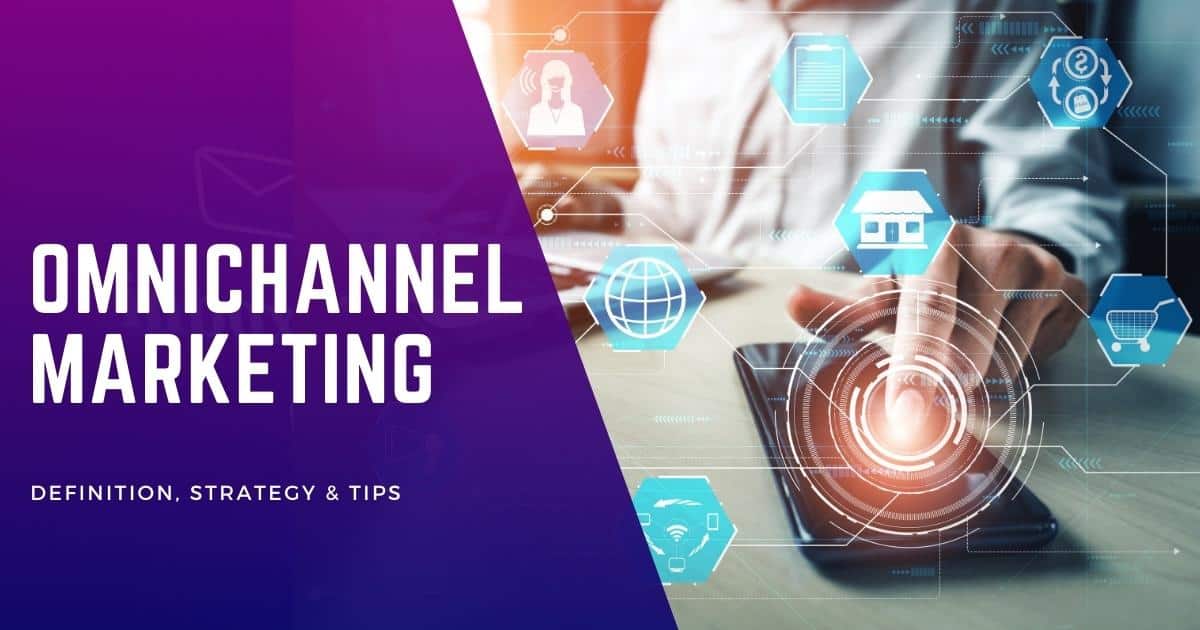Improving your marketing strategy isn’t just a buzzword; it’s necessary for anyone serious about elevating their brand. Think of it as your game plan for attracting and turning potential customers into loyal fans. It’s about positioning your products effectively, reaching your target audience, and ultimately hitting those all-important business milestones.
But let’s be real—crafting an effective marketing strategy is challenging, whether a large or small business. From understanding consumer behavior to analyzing metrics, the obstacles are plenty. As a professional digital marketer with hands-on experience in breaking down these complexities, I get it. And that’s why you can count on actionable, proven solutions in the content ahead.
So, why should you care about amping up your marketing approach? For starters, a well-crafted strategy can skyrocket your sales, enhance brand recognition, and give you a competitive edge. Whether you’re a seasoned marketer, a budding entrepreneur, or a blogger looking to monetize, this is your ticket to achieving the results you’ve been aiming for. So let’s get down to the nitty-gritty and start making some marketing magic happen.
Conducting Competitive Analysis for Improved Strategies
To improve your marketing strategy, conducting a competitive analysis is crucial. This process involves analyzing your competitors’ strengths and weaknesses to gain a competitive edge in the market. By understanding what works well for your marketing team and where they fall short in their digital marketing strategy, you can refine your own tactics and develop marketing initiatives that set you apart in terms of positioning.
Analyze competitor strengths and weaknesses
By examining your competitors’ strengths and weaknesses, you can identify areas where you can outperform them. To gauge their success, look at their performance indicators, such as customer satisfaction ratings or market share.
Conduct market research to assess their services or products and determine what sets them apart from others in the industry. Incorporate these findings into their marketing strategies and plan to promote their business effectively.
Use AI Tools and ChatGPT
Utilize AI tools and ChatGPT to analyze competitor data by conducting keyword gap analysis and content audits. ChatGPT can generate queries to identify competitor keywords, while AI tools can evaluate backlink profiles and site metrics. The combined insights offer a comprehensive view of competitor strengths and weaknesses.
Pros:
- Gain insights into successful strategies used by competitors.
- Identify potential gaps in the market that you can capitalize on.
Cons:
- It requires thorough research and analysis of multiple competitors.
- The information gathered may not always be readily available.
Identify market trends and opportunities through thorough research
Thorough market research is essential for improving your marketing strategy. You can adapt your approach accordingly by staying informed about current trends and emerging opportunities. Monitor industry publications, social media platforms, and consumer surveys to gather valuable insights.
Pros:
- Stay ahead of the curve by identifying upcoming trends.
- Discover untapped markets or niche audiences for targeting.
Cons:
- Requires time and effort to collect relevant data.
- Market trends may change rapidly, requiring continuous monitoring.
Evaluate competitor pricing, messaging, and target audience
To refine your marketing strategy further, evaluate how your competitors price their products or services. Understanding their pricing structure allows you to position yourself competitively in the market. Analyze their messaging techniques to see how they communicate with their target audience effectively.
Pros:
- Determine optimal pricing strategies based on competitor analysis.
- Refine messaging to resonate with target audience preferences.
Cons:
- Pricing strategies may vary based on factors like production costs.
- Messaging techniques may not directly translate to your target audience.
Utilize tools and techniques to gather data on competitors’ online presence
There are various tools and techniques available that can help you gather data on your competitors’ online presence. These include website analytics, social media monitoring, and keyword research. By leveraging these resources, you can gain insights into their digital marketing efforts and identify areas for improvement in your own strategy.
Pros:
- Access valuable data on competitor website traffic and engagement.
- Identify keywords that drive organic traffic to competitor websites.
Cons:
- Some tools may require a subscription or investment.
- Data gathered from these tools should be interpreted correctly for meaningful insights.
Develop unique selling propositions based on gaps in the market
You can identify gaps in the market by analyzing your competitors’ strengths, weaknesses, and market trends. These gaps present opportunities for developing unique selling propositions (USPs) that set you apart from the competition. Tailor your products or services to address these gaps effectively, providing customers with something they cannot easily find elsewhere.
Pros:
- Stand out from competitors by offering something unique.
- Attract customers who are looking for solutions not provided by others.
Cons:
- Developing a USP requires creative thinking and innovation.
- Market dynamics may change over time, requiring constant adaptation.
Maximizing Search Engine Optimization (SEO) for Better Rankings
Maximizing search engine optimization (SEO) is a must to improve your marketing strategy. Implementing effective SEO techniques can enhance your website’s visibility and attract more organic traffic. Here are some key strategies to consider:
Optimize Website Content with Relevant Keywords
One of the fundamental aspects of SEO is optimizing your website content with relevant keywords. Conduct thorough keyword research to identify the terms and phrases potential customers use to search for products or services like yours. Incorporate these keywords naturally into your website’s pages, including the titles, headings, and body text.
Pro Tip: Use long-tail keywords specific to your niche or industry. They often have less competition and can help you target a more focused audience.
Create High-Quality Backlinks from Reputable Websites
Building high-quality backlinks from reputable websites is crucial for improving your search engine rankings. Backlinks act as “votes of confidence” in the eyes of search engines, indicating that other trustworthy sites value your content. Contact authoritative websites in your industry and request backlinks or guest posting opportunities.
Pro Tip: Focus on quality rather than quantity. A few high-quality links from reputable sources can have a more significant impact than numerous low-quality links.
Improve Website Loading Speed and Mobile Responsiveness
Website loading speed and mobile responsiveness are vital in user experience and SEO rankings. Slow-loading websites can frustrate visitors and lead them to abandon your site, resulting in higher bounce rates. Optimize images, minimize code, leverage caching techniques, and choose reliable hosting providers to improve loading speed.
Pro Tip: Test your website’s mobile responsiveness across different devices using tools like Google’s Mobile-Friendly Test. Ensure that all elements are displayed correctly on smartphones and tablets.
Utilize Meta Tags, Alt Tags, and Header Tags
Meta, alt, and header tags are essential on-page SEO elements that can significantly impact your website’s visibility. Meta tags provide search engines with information about your web page, while alt tags describe images for visually impaired users and search engine crawlers. Header tags (H1, H2, H3) structure your content and help search engines understand the information hierarchy.
Pro Tip: Write descriptive and concise meta descriptions that accurately represent the content of each page. This can improve click-through rates in search engine results.
Regularly Update Website Content with Fresh Information
Search engines favor websites that consistently provide fresh and valuable content to their visitors. Regularly updating your website with new blog posts, articles, or product updates signals to search engines that your site is active and relevant. Aim to create high-quality content that addresses the needs and interests of your target audience.
Pro Tip: Incorporate keywords naturally into your updated content while maintaining readability and relevance. Avoid keyword stuffing, which can negatively impact SEO rankings.
By implementing these strategies effectively, you can enhance your marketing strategy by improving your website’s visibility in search engine results pages (SERPs). Remember to monitor the performance of these tactics using analytics tools like Google Analytics or SEMrush. Continuously analyze data to identify areas for improvement and make necessary adjustments to optimize your SEO efforts.
Utilizing Email Marketing to Drive Customer Engagement

Email marketing is a powerful tool that can significantly improve your marketing strategy. You can effectively utilize email campaigns to engage with your customers, build relationships, and drive conversions. Here are some key strategies to enhance your email marketing efforts:
Build an Email List by Offering Valuable Incentives or Exclusive Content
Building a strong and engaged subscriber list is one of the first steps in leveraging email marketing. To entice potential customers to join your email list, offer them valuable incentives or exclusive content. This could include free e-books, guides, discounts, or access to special promotions. By providing something of value in exchange for their contact information, you can attract more subscribers genuinely interested in what you offer.
Segment Your Email List Based on Customer Preferences or Demographics
Segmenting your email list allows you to tailor your messaging and content based on specific customer preferences or demographics. You can send more targeted and relevant emails by dividing your subscribers into smaller groups based on factors such as age, location, interests, or past purchase behavior. This personalization increases the likelihood of engagement and conversions since recipients receive content that resonates with their needs and interests.
Craft Compelling Subject Lines That Entice Recipients to Open Emails
The subject line of an email plays a crucial role in determining whether recipients will open it. Craft compelling subject lines that grab attention and pique curiosity to improve open rates and encourage engagement. Use action words, create a sense of urgency or exclusivity, ask intriguing questions, or make bold statements that resonate with your audience’s desires or pain points.
Personalize Email Content Based on Customer Behavior or Purchase History
Personalization is key. Tailor the content of your emails based on customer behavior or purchase history to provide a more personalized experience. For example, if a customer has recently purchased a product from your website, you can send them follow-up emails with related products or accessories. This level of personalization shows that you understand their needs and can recommend relevant offerings, increasing the chances of repeat purchases.
Use Automation Tools to Streamline Email Campaigns and Track Performance
Automation tools are invaluable in streamlining your email marketing campaigns and tracking their performance. These tools allow you to set up automated workflows like welcome emails, abandoned cart reminders, or birthday greetings.
Automating these processes saves time and effort while ensuring consistent communication with your subscribers. These tools provide valuable insights into open rates, click-through rates, and conversion metrics, allowing you to optimize your campaigns for better results.
Incorporating Paid Advertising and Influencer Marketing for Reach

It’s essential to leverage paid advertising and influencer marketing to improve your marketing strategy. These tactics can help you reach a wider audience and increase brand awareness. Let’s explore how you can incorporate these strategies effectively.
Leverage paid advertising platforms like Google Ads or Facebook Ads for targeted exposure
Paid advertising platforms such as Google Ads and Facebook Ads provide powerful tools to target specific audiences. Utilizing these platforms allows you to create tailored ad campaigns that reach the right people at the right time. Consider the following tips:
- Conduct thorough research on your target audience to understand their demographics, interests, and online behavior.
- Use this information to create compelling ad copy that resonates with your audience’s pain points and offers solutions.
- Set clear goals for your ad campaigns, whether driving website traffic, generating leads, or increasing sales.
- Monitor key performance metrics like click-through rates (CTR), conversion rates, and return on ad spend (ROAS).
- Continuously optimize your ad campaigns based on data-driven insights to maximize their effectiveness.
Collaborate with influencers who align with your brand values and have a relevant audience
Influencer marketing has become increasingly popular in recent years. By partnering with influencers who align with your brand values and have a relevant audience, you can tap into their followers’ trust and credibility. Here are some steps to consider:
- Identify influencers who cater to your target market by researching social media platforms like Instagram or YouTube.
- Look for influencers whose content aligns with your brand’s messaging and values.
- Reach out to them with a personalized pitch explaining why collaborating would benefit both parties.
- Discuss the terms of the partnership, including content creation guidelines, compensation, and timeline.
- Track the performance of influencer collaborations using unique discount codes or referral links.
Create engaging ad copy that resonates with your target audience’s pain points
Your paid advertising campaigns’ success relies heavily on your ad copy’s effectiveness. To create engaging and persuasive content, consider the following strategies:
- Understand your target audience’s pain points and challenges.
- Craft compelling headlines that grab attention and highlight the benefits of your product or service.
- Use clear and concise language to convey your message effectively.
- Include a strong call-to-action (CTA) that prompts users to take action, such as “Shop Now” or “Learn More.”
- Test different ad copy variations to identify what resonates best with your audience.
Monitor ad performance metrics such as click-through rates (CTR) and conversion rates
Monitoring the performance of your paid advertising campaigns is crucial for optimizing their effectiveness. Keep an eye on key metrics such as click-through rates (CTR), conversion rates, cost per acquisition (CPA), and return on investment (ROI). Here are some tips for effective monitoring:
- Utilize tracking tools provided by advertising platforms to measure the performance of each campaign.
- Analyze data regularly to identify trends, patterns, and opportunities for improvement.
- A/B test different elements of your ads, including visuals, headlines, CTAs, and targeting options.
- Make data-driven decisions based on insights gathered from monitoring.
Continuously optimize ad campaigns based on data-driven insights
Optimization is an ongoing process. By continuously analyzing data and making adjustments accordingly, you can improve the performance of your campaigns over time. Consider these optimization techniques:
- Identify underperforming ads or targeting options and make necessary adjustments.
- Experiment with different bidding strategies to find the most cost-effective approach.
- Test new ad formats or placements to expand reach and engagement.
- Stay up-to-date with industry trends and algorithm changes that may impact campaign performance.
Incorporating paid advertising platforms like Google Ads or Facebook Ads and collaborating with influencers who align with your brand values can significantly enhance your marketing strategy.
Crafting a Comprehensive Digital Marketing Strategy with Templates
Define Marketing Goals and Objectives
To improve your marketing strategy, it is crucial to start by defining your marketing goals and objectives. This will help align your strategy with what you want to achieve. Consider what you want to accomplish through your digital marketing efforts, whether it’s increasing brand awareness, driving website traffic, generating leads, or boosting sales. You can create a focused and coherent plan by clearly defining your goals.
Develop Buyer Personas
Understanding your target audience is essential for effective digital marketing. Developing buyer personas can provide valuable insights into the needs, preferences, and behaviors of your potential customers. A buyer persona is a fictional representation of your ideal customer based on market research and data analysis. It helps you tailor your marketing messages and strategies to resonate with the specific needs of different customer segments.
Creating buyer personas involves researching your target audience’s demographics, psychographics, and behavior patterns. You can gather this information through surveys, interviews, social media analytics, or customer feedback. Once you have developed these personas, they serve as a reference point for crafting personalized content that appeals to each audience segment.
Create a Content Calendar
A well-organized content calendar is invaluable for planning and organizing your digital marketing activities. It allows you to map out when and where you will publish different types of content, such as blog posts, social media updates, videos, or email newsletters.
By having a content calendar in place, you can ensure consistent messaging across various channels while maintaining a steady flow of fresh content for your audience. This lets you stay on track with publishing schedules and maintain engagement with your target audience.
Use Analytics Tools
Measuring the effectiveness of your digital marketing efforts is crucial for making informed decisions about refining and optimizing strategies. Utilize analytics tools such as Google Analytics or social media insights to track key performance metrics like website traffic, conversions, engagement rates, and customer behavior.
These tools provide valuable data that can help you identify which marketing channels and tactics are working well and which ones need improvement. By regularly monitoring your analytics, you can make data-driven decisions to optimize your campaigns and allocate resources effectively.
Continuously Refine and Adapt
Digital marketing is an ever-evolving landscape, so continuously refining and adapting your strategy based on performance metrics is important. Regularly review the data from your analytics tools to identify improvement areas or growth opportunities.
Consider A/B testing different elements of your campaigns to determine what resonates best with your audience. This could include testing variations in ad copy, imagery, landing page design, or call-to-action buttons. By experimenting and analyzing the results, you can optimize your digital marketing efforts for better results over time.
Implementing Local Search Engine Marketing for Targeted Outreach

Implementing local search engine marketing is crucial to improve your marketing strategy and reach a specific audience. By optimizing your online presence and engaging with the local community, you can increase brand awareness and attract potential customers in your area. Let’s explore some effective strategies to achieve this:
Optimize Google My Business Listing
One of the first steps in local search engine marketing is to optimize your Google My Business listing. Ensure that all contact information, such as phone numbers, addresses, and business hours, are accurate and up-to-date. This enables potential customers to find and contact your business easily.
Encourage Customer Reviews
Positive reviews play a significant role in attracting new customers. Encourage satisfied customers to leave reviews on popular platforms like Yelp or TripAdvisor. These reviews boost your online reputation and act as social proof for others considering using your products or services.
Utilize Local Keywords
Incorporating local keywords into your website content, meta tags, and headings helps search engines understand the relevance of your business to a specific location. Conduct keyword research to identify relevant terms that people in your area might use when searching for products or services similar to yours.
Engage with the Local Community
Building relationships within the local community is essential for successful local marketing efforts. Consider participating in community events or partnering with other businesses or organizations in your area. This helps create brand awareness and establishes trust and loyalty among potential customers.
Leverage Location-Based Targeting Options
When running online advertising campaigns, take advantage of location-based targeting options on platforms like Google Ads or Facebook Ads Manager. By specifying the geographic areas where you want your ads to be shown, you can ensure that they reach the right audience – people who are more likely to convert into customers.
Implementing these strategies will help you connect with potential customers in your target location and increase the effectiveness of your marketing efforts. By optimizing your online presence, engaging with the local community, and utilizing location-based targeting options, you can enhance brand awareness and attract more customers.
Over to You
An effective marketing strategy is crucial for business success in today’s competitive landscape. Implementing the strategies discussed in this blog post can enhance your marketing efforts and drive better results. Start by conducting a comprehensive competitive analysis to gain insights into your industry and identify areas of improvement. Maximize search engine optimization techniques to improve your website’s visibility and attract organic traffic.
Email marketing is a powerful tool to engage with your customers and nurture relationships. Incorporate paid advertising and influencer marketing to expand your reach and target specific audiences. Craft a comprehensive digital marketing strategy using templates that align with your goals and objectives. Lastly, implement local search engine marketing tactics to connect with potential customers in your area.
To take your marketing strategy to the next level, continuously evaluating and adapting your approach based on data-driven insights is important. Stay up-to-date with the latest trends and best practices in the ever-evolving digital landscape. Experiment with different strategies, measure their effectiveness and make adjustments accordingly. Remember, consistency is key.
FAQs
How long does it take for new marketing strategies to show results?
The time required for new marketing strategies to yield results varies considerably by the nature of the strategy and the industry. However, a period of 3 to 6 months is generally considered standard for measurable outcomes in digital marketing. Longer-term strategies like SEO may require up to a year for substantial impact.
Are there any free tools available for conducting competitive analysis?
Several free tools are available to help conduct competitive analysis effectively. Tools like Google Trends, SEMrush (free version), SimilarWeb (free version), MozBar (free Chrome extension), and Social Blade (for social media analytics) are great options to get started. While these free tools offer valuable insights, keep in mind that upgrading to their paid versions may provide more comprehensive data and advanced features.
How can I measure the effectiveness of my email marketing campaigns?
To measure the effectiveness of your email marketing campaigns, you can track various metrics such as open rates, click-through rates (CTRs), conversion rates, bounce rates, and unsubscribe rates. Utilize an email marketing platform or software that provides detailed analytics and reporting capabilities. By analyzing these metrics, you can identify areas for improvement and optimize your campaigns for better results.
Is influencer marketing suitable for all businesses?
Influencer marketing can be beneficial for a wide range of businesses, but its suitability depends on factors such as target audience demographics, industry niche, budget constraints, and campaign objectives. It’s important to carefully research and select influencers who align with your brand values and have genuine influence over your target audience. Consider conducting a cost-benefit analysis to determine if influencer marketing is a viable strategy for your specific business goals.
How often should I review and update my digital marketing strategy?
A digital marketing strategy should undergo a comprehensive review at least quarterly. This ensures alignment with evolving market trends, consumer behaviors, and technological advancements. Additionally, key performance indicators should be analyzed monthly for agile adjustments to tactics and resource allocation.
How do you solve a poor marketing strategy?
To rectify a poor marketing strategy, conduct a comprehensive audit to identify weaknesses and inefficiencies. Utilize data analytics to reassess target audiences, key performance indicators, and ROI. Subsequently, reallocate resources to high-performing channels and refine the messaging. Periodic reviews ensure adaptability to market trends and consumer behaviors.
What are the 5 key marketing strategies?
The 5 key marketing strategies are: 1) Segmentation, targeting specific consumer groups; 2) Positioning, creating a unique brand image; 3) Channel Strategy, selecting optimal distribution platforms; 4) Promotional Mix, employing advertising, public relations, and sales promotions; 5) Product Life Cycle Management, adapting strategies through stages from introduction to decline. Each contributes to effective resource use and market penetration.
Why improve marketing strategy?
Improving a marketing strategy enhances ROI by targeting the most responsive audiences and optimizing resource allocation. A data-driven approach identifies effective channels and tactics, leading to increased customer engagement and sales. Continuous refinement mitigates market volatility and adapts to consumer behavior shifts.



